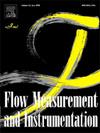Numerical investigation on cavitation erosion and evolution of choked flow in a tri-eccentric butterfly valve
IF 2.3
3区 工程技术
Q2 ENGINEERING, MECHANICAL
引用次数: 0
Abstract
The tri-eccentric butterfly valve is widely utilized in the petrochemical, nuclear, and metallurgy industries due to its robust sealing performance and great pressure resistance. When the local static pressure is lower than the saturation vapor pressure, the fluid phase is transformed into vapor, and cavitation occurs. Cavitation intensifies and the bubbles generated by cavitation severely hinder the flow when the inlet pressure remains constant and the outlet pressure further decreases. This phenomenon is known as choked flow. Choked flow is a derivative phenomenon of cavitation, which seriously threatens the lifetime of valves and the safety of the operation system. In this paper, a multiphase flow of the tri-eccentric butterfly valve is modeled to investigate the choked flow characteristics. The numerical results based on the proposed model are in good agreement with the experiments. The effect of the pressure drop on the mass flow rate and flow coefficient is studied and the liquid pressure recovery factor of the tri-eccentric butterfly is determined at the certain valve opening degree based on the Schnerr and Sauer cavitation model. The relationship between the pressure ratio and choked flow is studied by pressure and velocity contours. The susceptible erosion locations and primary causes of erosion for the tri-eccentric butterfly valve at the certain valve opening degree are investigated. By comparison of the distribution of the vapor volume fraction and vortex structures, the spatial correlation between vortex and choked flow is revealed. Meanwhile, the effect of the pressure ratios on the average vapor volume fraction at 70 % and 100 % valve opening degrees is studied. The evolution of choked flow in the tri-eccentric butterfly is revealed and the cause of choking is pointed out.
三偏心蝶阀中气蚀侵蚀和窒流演变的数值研究
三偏心蝶阀以其坚固的密封性能和强大的耐压性能在石化、核工业和冶金工业中得到广泛应用。当局部静压低于饱和蒸汽压时,流体相会转化为蒸汽,从而产生气蚀。当入口压力保持不变而出口压力进一步降低时,气蚀会加剧,气蚀产生的气泡会严重阻碍流动。这种现象被称为窒息流。窒息流是气蚀的衍生现象,严重威胁阀门的使用寿命和运行系统的安全。本文建立了三偏心蝶阀的多相流模型,以研究窒流特性。基于所建模型的数值结果与实验结果十分吻合。研究了压降对质量流量和流量系数的影响,并根据 Schnerr 和 Sauer 汽蚀模型确定了三偏心蝶阀在一定阀门开度下的液体压力恢复系数。通过压力和速度等值线研究了压力比和呛流之间的关系。研究了在一定阀门开度下三偏心蝶阀的易侵蚀位置和主要侵蚀原因。通过比较蒸汽体积分数和涡流结构的分布,揭示了涡流和呛流之间的空间相关性。同时,研究了在阀门开度为 70% 和 100% 时,压力比对平均蒸汽体积分数的影响。揭示了三偏心蝶阀中呛流的演变过程,并指出了呛流的原因。
本文章由计算机程序翻译,如有差异,请以英文原文为准。
求助全文
约1分钟内获得全文
求助全文
来源期刊

Flow Measurement and Instrumentation
工程技术-工程:机械
CiteScore
4.30
自引率
13.60%
发文量
123
审稿时长
6 months
期刊介绍:
Flow Measurement and Instrumentation is dedicated to disseminating the latest research results on all aspects of flow measurement, in both closed conduits and open channels. The design of flow measurement systems involves a wide variety of multidisciplinary activities including modelling the flow sensor, the fluid flow and the sensor/fluid interactions through the use of computation techniques; the development of advanced transducer systems and their associated signal processing and the laboratory and field assessment of the overall system under ideal and disturbed conditions.
FMI is the essential forum for critical information exchange, and contributions are particularly encouraged in the following areas of interest:
Modelling: the application of mathematical and computational modelling to the interaction of fluid dynamics with flowmeters, including flowmeter behaviour, improved flowmeter design and installation problems. Application of CAD/CAE techniques to flowmeter modelling are eligible.
Design and development: the detailed design of the flowmeter head and/or signal processing aspects of novel flowmeters. Emphasis is given to papers identifying new sensor configurations, multisensor flow measurement systems, non-intrusive flow metering techniques and the application of microelectronic techniques in smart or intelligent systems.
Calibration techniques: including descriptions of new or existing calibration facilities and techniques, calibration data from different flowmeter types, and calibration intercomparison data from different laboratories.
Installation effect data: dealing with the effects of non-ideal flow conditions on flowmeters. Papers combining a theoretical understanding of flowmeter behaviour with experimental work are particularly welcome.
 求助内容:
求助内容: 应助结果提醒方式:
应助结果提醒方式:


